Tottenham Hotspur have been a club who have found themselves in a situation of ‘almost there, but not quite’ during the past few seasons now. In the late 2000s and early 2010s, after a number of seasons finishing midtable, Tottenham started to climb their way up the table, with players like Luka Modrić and Gareth Bale leading the team to a UEFA Champions League spot, the first time ever in their history. After a few seasons of teetering between 4th and 5th place, Mauricio Pochettino came in and was able to elevate Spurs even further, leading the charge for a title race in 2015/16 (ultimately finishing 3rd behind Leicester City, and Arsenal), and a strong second-place finish in 2016/17 (eight points ahead of third-placed Manchester City). In 2018/19, after making headlines for being the first team and only to not sign a single player in the summer transfer window, they made the finals of the Champions League, ultimately losing by two goals to Liverpool.
This constant reoccurrence of Spurs being just on the brink of success only to lose out has obviously been frustrating for fans, and watching teams around them become stronger and more ambitious has not helped. The firing of Pochettino saw José Mourinho and his tactics come in, and he has averaged 1.76 points per match, with 11 wins, four draws, and six losses. It is still a bit early to tell if Mourinho will be able to do what Pochettino couldn’t and get the club over the finish line – he had only managed 21 matches before football was stopped due to COVID-19.
Before the pandemic, he managed to sign three players in the January transfer window, his first for the club. One of these signings was Steven Bergwijn, a 22-year-old coming from PSV, who primarily plays as a winger. The Dutchman has only played seven matches for Spurs (in all competitions), however, these seven matches plus his time at PSV can tell us a lot about what type of player he is. This tactical analysis will look at Bergwijn’s strengths, weaknesses, and what he brings specifically to this Tottenham side, who so desperately want to get over the line and win a trophy.
Bergwijn is an attacking player, his main position being the left-wing, but he has quite a bit of appearances under his belt playing as both a right-winger and a striker as well, something that Tottenham desperately need.

As an attacker, most of Bergwijn’s strengths are skills that he showcases whilst his team is in the attacking phase – when they are in possession.
Playmaking
As noted earlier, Bergwijn is one of those wingers whose position is the opposite of his dominant foot, as he is a right-footed winger, playing on the left-wing. Bayern Munich succeeded for several seasons with both Frank Ribery (right-footed winger playing on the left-wing) and Arjen Robben (left-footed winger playing on the right-wing) excelling in these positions. Mohamed Salah (left-footed winger playing on the right-wing) and Raheem Sterling (right-footed winger playing on the left-wing) are examples of current players in the Premier League who are inverted wingers.
Bergwijn’s advantage when it comes to playmaking is because he primarily plays as an inverted winger. His position as an inverted winger allows him to create chances for himself and his teammates using a couple plays highlighted below.
Numerical Advantage
Inverted wingers allow for an easier time to create a numerical advantage over the opposition’s fullback. When Bergwijn, a right-footed winger playing on the left, is in front of his teammate, a left-footed left-back (usually either Ben Davies or Danny Rose), he has the ability to dribble the ball forward, and inwards, towards the opposition’s box. The fullback defending him will be forced to defend with his weaker foot. Once Bergwijn cuts inside, Davies or Rose then have the left flank with space to run into, thus creating a 2vs1 situation with the opposition’s right-back, who again, is being forced to defend on his weak foot.
Switching Flanks
Bergwijn being an inverted left-winger also allows for more passing options from his stronger foot once he receives the ball. He has the ability to either pass the ball with the side of his boot to the midfielders on his right. He has the ability to pass the ball into the box for the striker to receive or cross it to the other winger, with both passes using the foot that is away from the right-back defending him. Finally, he can switch play completely, and pass it to his right-back, again with his stronger foot. This play specifically is a fantastic way to catch the opposition off guard, as they will likely be unprepared to receive an attack from the right side of the pitch. The pass is usually too fast for the defence to reset, and it gives the attacking team (Tottenham in this example), the chance to attack quickly and freely.
Tottenham do not really have a left-winger that is inverted, with Heung-Min Son, who is fairly two-footed being the only one that comes close. Bergwijn gives Mourinho options when playmaking as an inverted winger, giving Spurs a huge advantage that a lot of opposition teams’ fullbacks will struggle with.
Individual Offensive Attributes
Let’s look at how Steven Bergwijn’s skills make him an asset anywhere on the pitch.
Dribbling
Bergwijn is a great dribbler, and it is clear that it is not something he shies away from whilst on the ball. He does not seem to mind taking on players rather than attempt to change direction or look for a pass at first instinct, as statistically, he averages 5.86 dribbles a match – the third-most in the Tottenham squad after Son (6.25) and Tanguy Ndombèlé (6.07). While of course, the risk of his dribble is less than the risk of a central midfielder for example, due to the fact that an unsuccessful dribble performed by Bergwijn in the final third is not as dangerous as an unsuccessful dribble in the middle of the pitch, the fact that Bergwijn is relentless in wanting to take on defenders make him a huge asset when his team is looking to create chances.
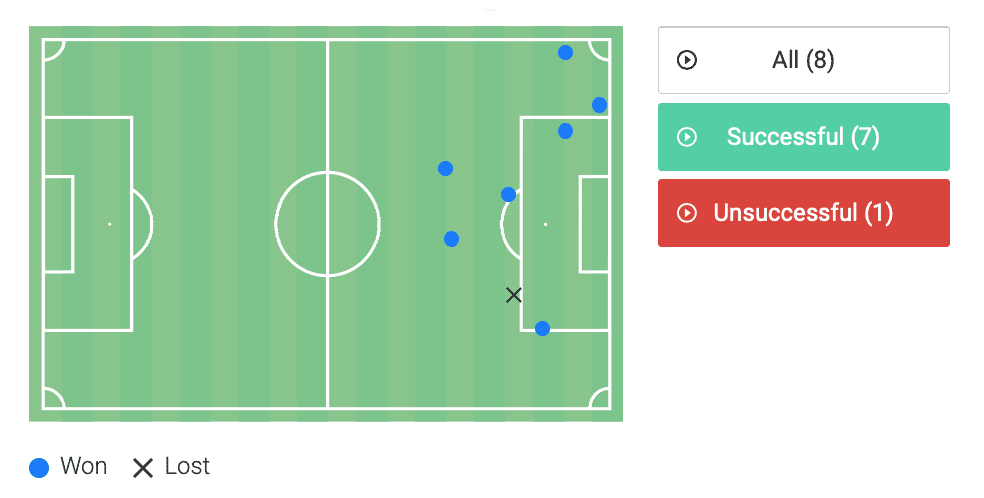
Bergwijn is a player with quick feet and incredibly good close control that allows him to dribble past defenders, specifically those with a bigger build, as they cannot keep up with Bergwijn. He’ll use movement to trick defenders to go one way, which they tend to fall for, and then move the opposite direction which allows him space to either carry on with possession of the ball, shoot or make a pass.
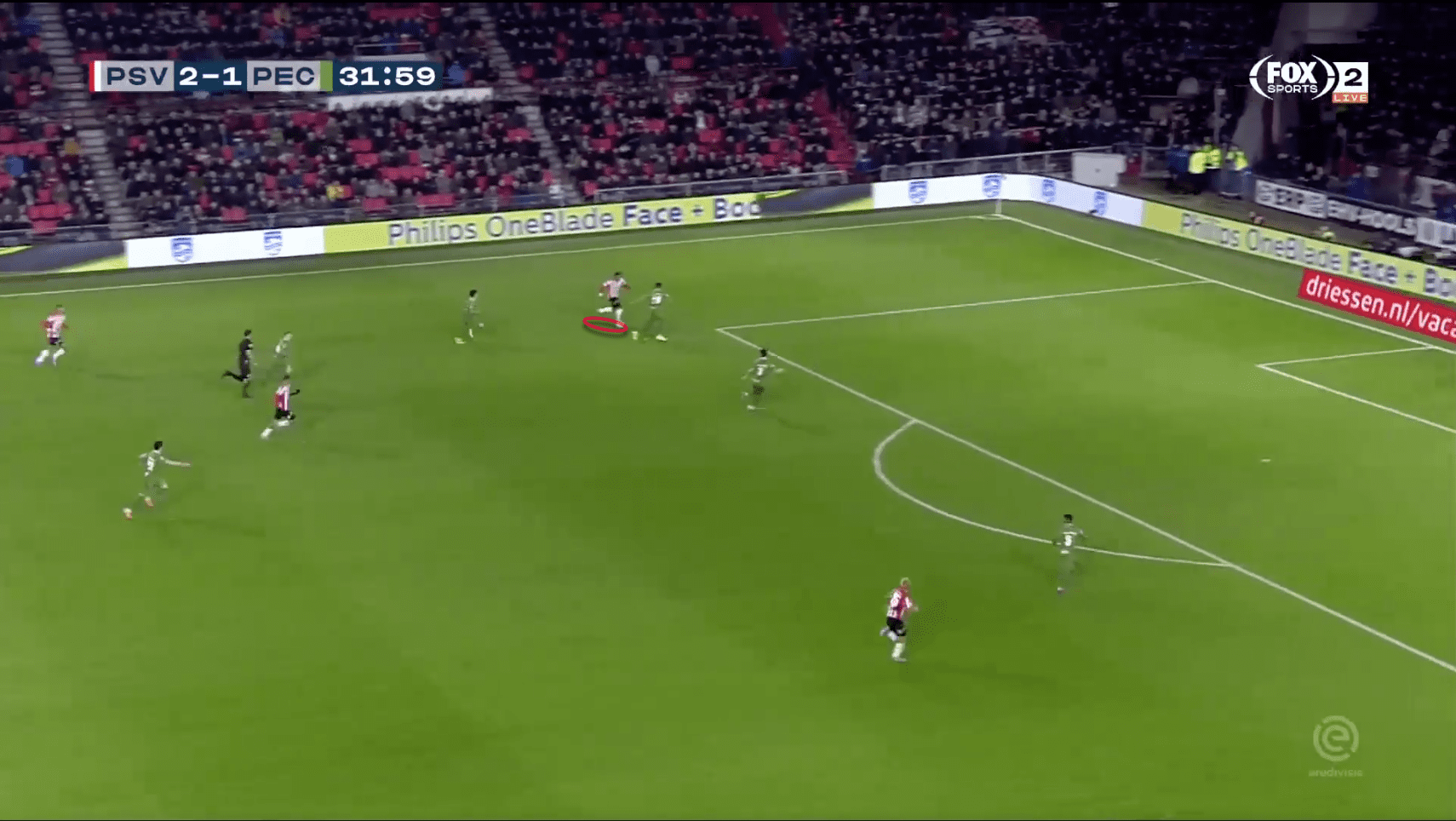
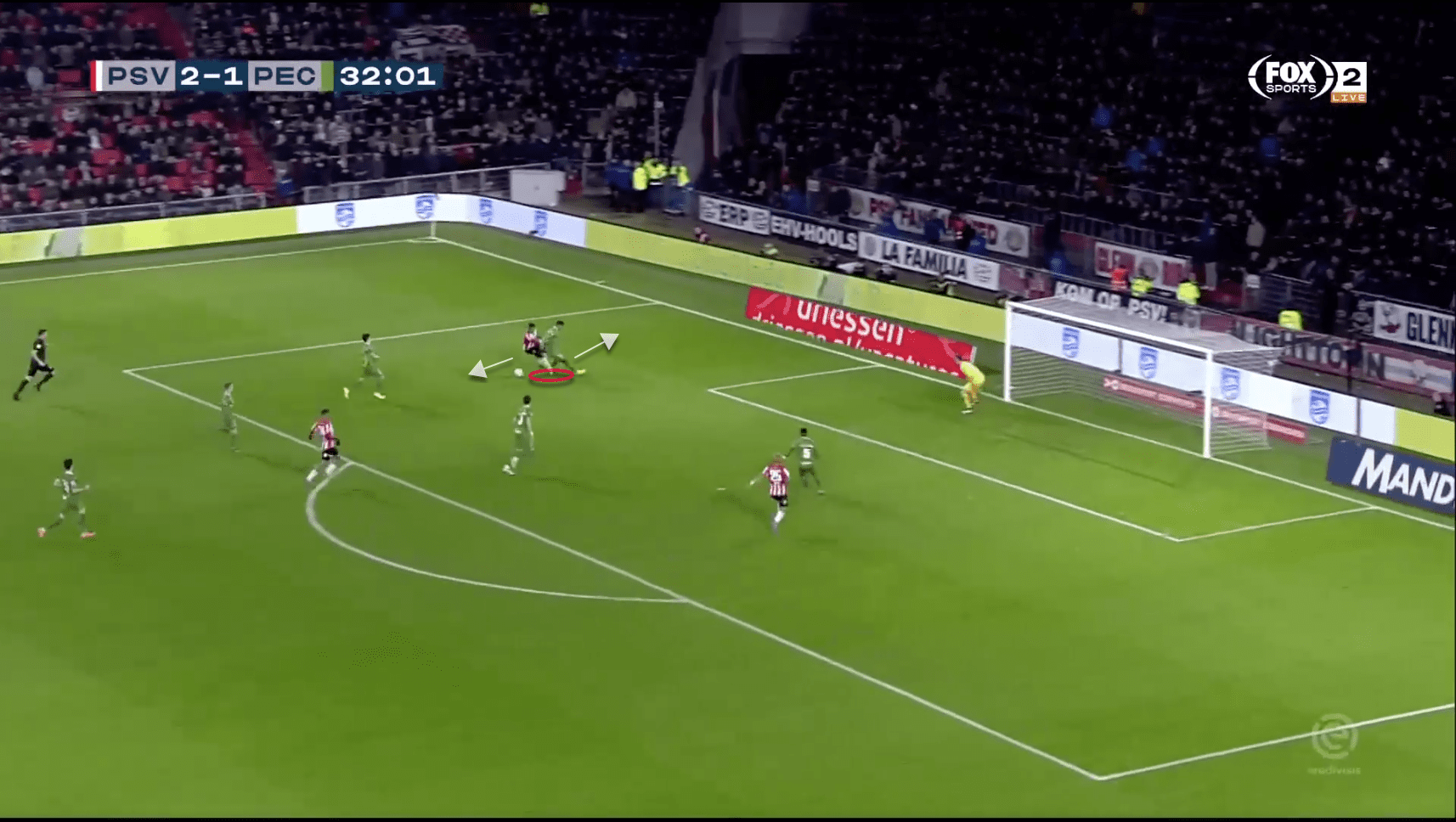
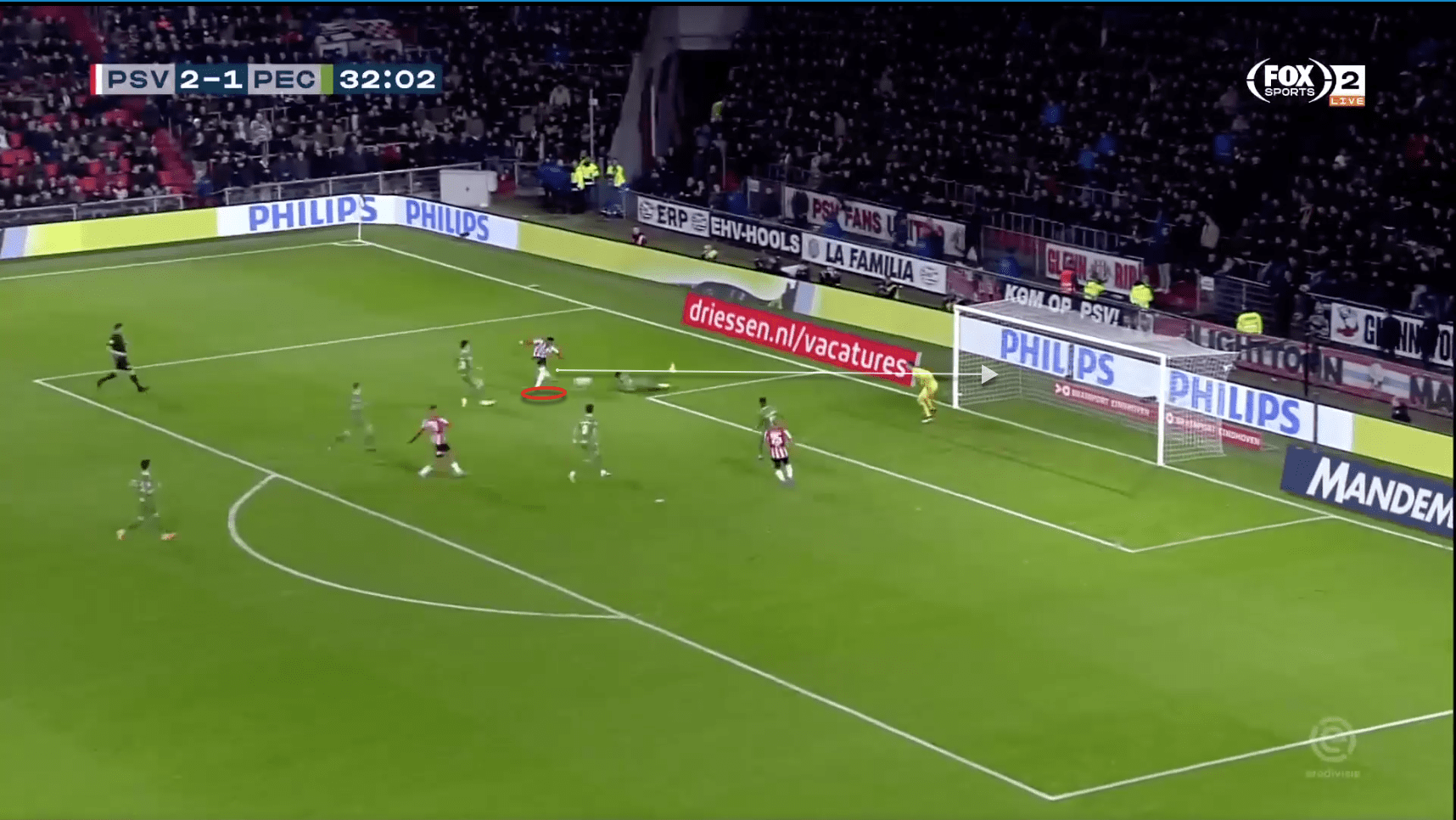
Bergwijn has a dribble success rate of 65% this season. This number seems average, and without context, it is. This percentage ranks him as 15th in the Tottenham squad in terms of successful dribble rates. However, attackers are more likely to be dispossessed because they are closer to the opposition’s goal (Out of the 14 that are above Bergwijn, Érik Lamela [6th] and Son [14th] are the only two players that are attackers). Furthermore, Bergwijn has a tendency to draw fouls when he is dribbling if he is unable to carry on with possession of the ball, shoot, or make a pass. These instances do not count as a successful dribble, but they do help out Bergwijn’s team rather than the opposition, leaving the statistic to be a bit skewed, and needing context.
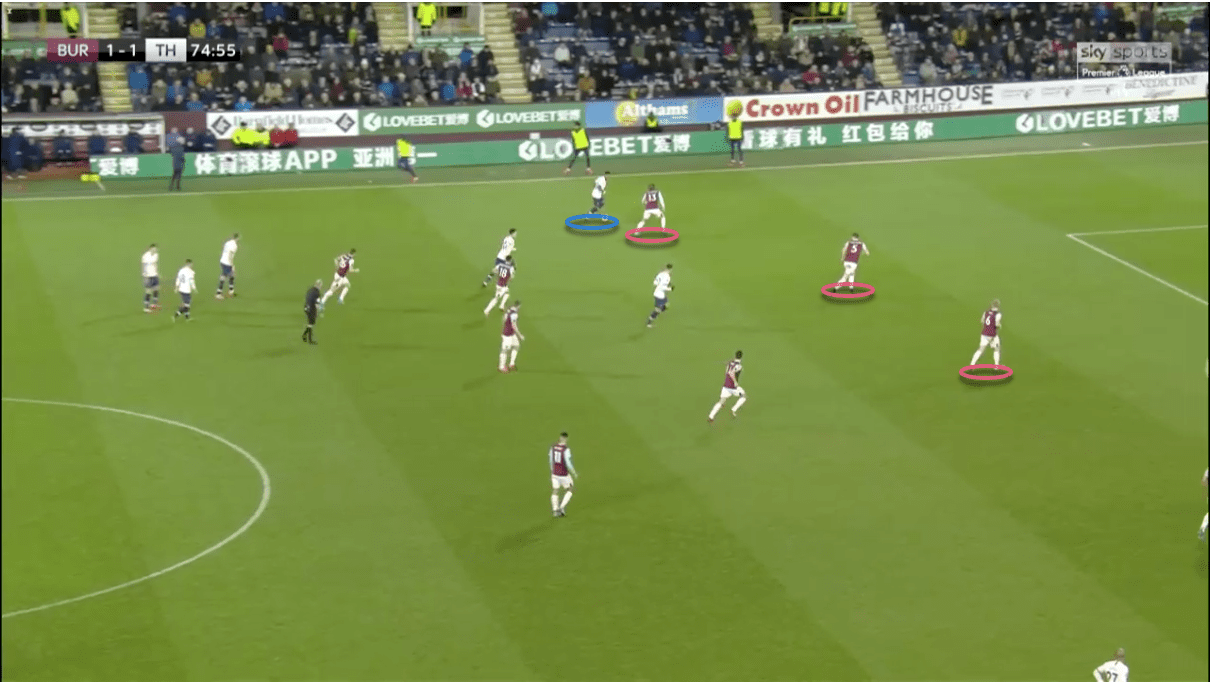

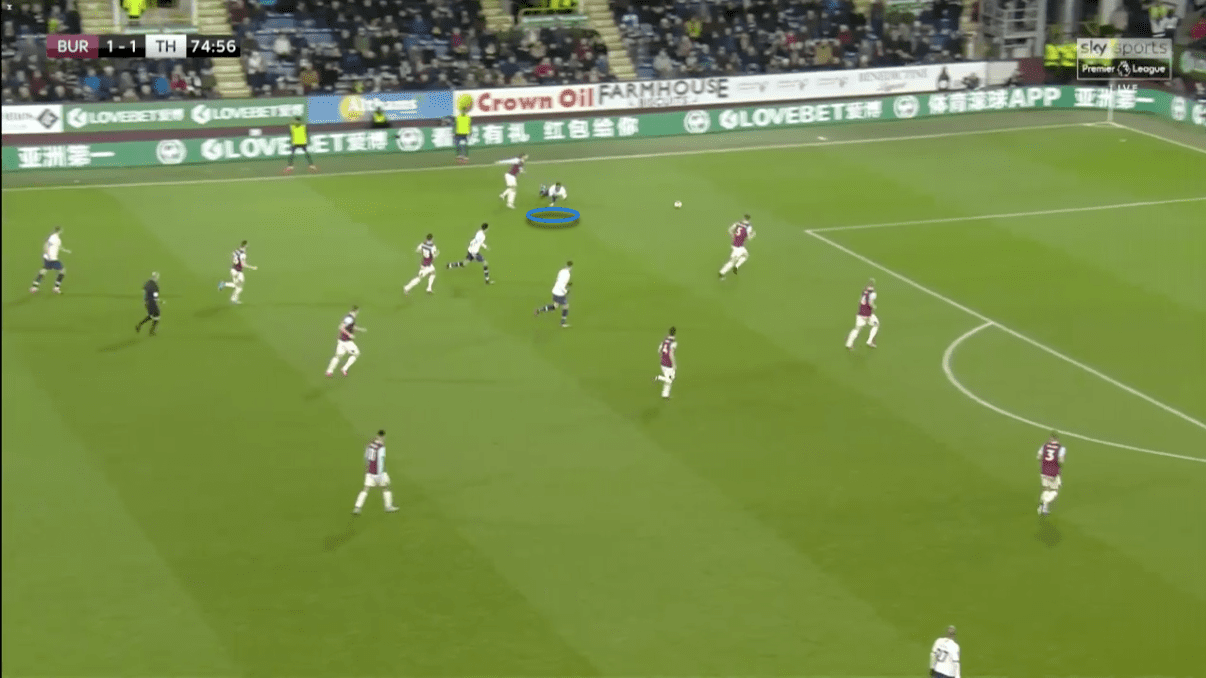
Passing & Finishing
There are some forward players whose contribution on the pitch cannot be shown with numbers. Their contribution comes from pitch movement and other attributes that are not quantifiable. Bergwijn is not one of those players. In fact, his numbers are really high for a young player. During the 2018/19 season, he registered 14 goals and 12 assists in 33 appearances (26 goal contributions in total). Because he was a winter signing for Spurs, he spent the first half of the season at PSV, where, in 16 appearances, he had 15 goal contributions (five goals, and 10 assists). Four of these five goals either opened up the scoring for PSV or was the winning goal – very important goals. His two Premier League goals for Tottenham have also opened up the scoring (scored the first goal in a 2-0 win over Manchester City, and the first goal in a 2-3 loss to Wolverhampton Wanderers). His numbers are not only very high, especially for a winger, but they have gotten higher each season; he is constantly improving.
We’ve discussed playmaking – how he gets into strong positions to shoot or pass. Let’s look at how Bergwijn fares once he gets to that position. In terms of passing, he has averaged a pass accuracy of 88.5% this season, and more importantly an 85% pass accuracy to the final third, and 77.5% pass accuracy into the penalty box. Bergwijn actively looks up and tries to progress the ball forward during matches, always looking for a way to get his team on the scoreboard. This mentality allows him to average two key passes a match.
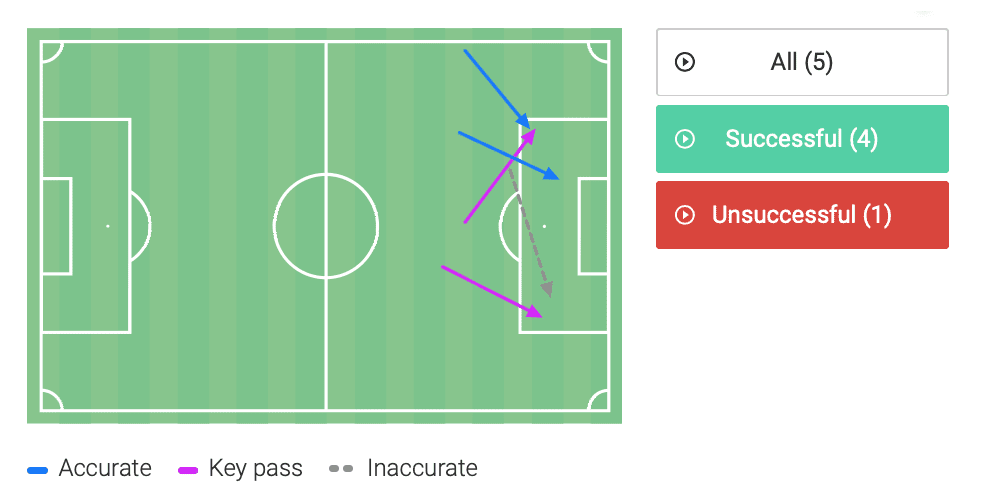
As mentioned above, in his last full season at one club Bergwijn scored 14 goals. The role of wingers has changed over time, and wingers, especially inverted wingers, are expected to score more goals than the traditional wingers that stuck to the flanks of the pitch. Because of this, Bergwijn will be expected to consistently score at least double figures (and realistically over 15 goals) if he is to be a starter. A comparison between Bergwijn and some other Premier League wingers can tell us how he fares when it comes to shooting.
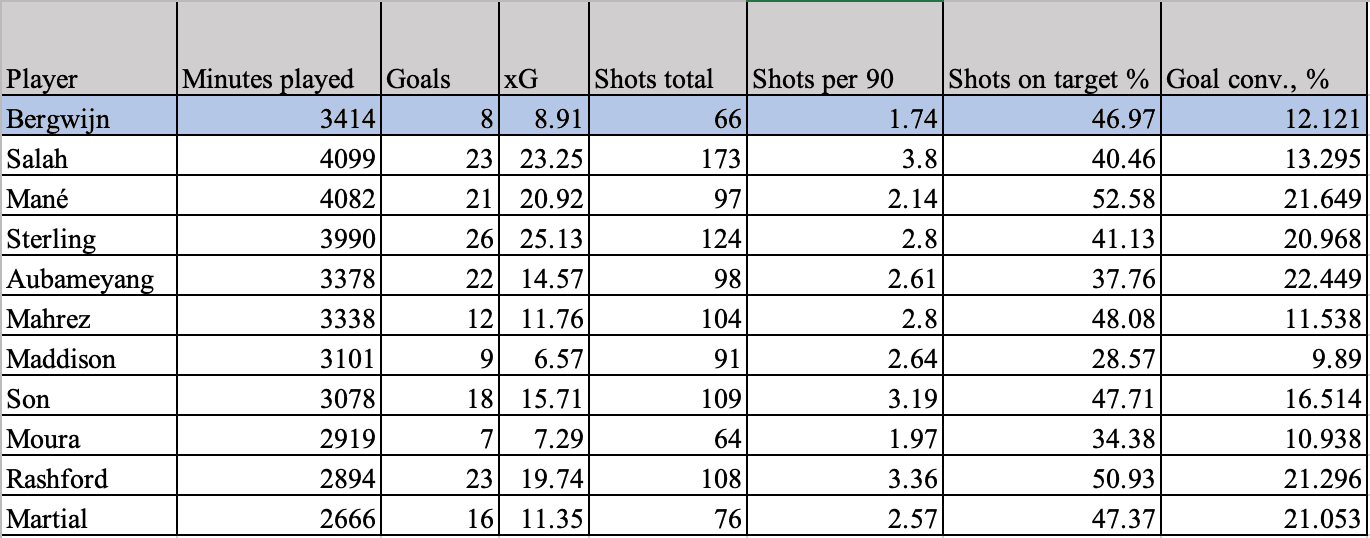
When looking at this table, we can see that Bergwijn’s goal tally is quite low. While he does make it up for it in assists, if Tottenham want to get to that next level, it wouldn’t hurt for Bergwijn to add more goals to his game. The good news is that this is a relatively easy thing for Bergwijn to do. Why? Because he simply needs to up the number of shots he takes. He averages 1.74 shots a match (66 total). Most of the players on this list average quite a bit more – double, and even triple that. That being said, Bergwijn’s shots on target percentage is higher than Salah, Sterling, James Maddison, and Lucas Moura. Bergwijn just needs to have more faith in his abilities, and attempt more shots. The goals should come after that.

What he can bring to Spurs
One of Tottenham’s main struggles through the years is keeping Harry Kane fit, and in turn, finding a good replacement for him on the pitch when he is not able to play. Kane is considered one of the best strikers in the world by many, and he pretty much starts every single game for Spurs when available to play. When Kane has been injured, usually one of Dele Alli, Son, or Moura fill in for Kane. The problem is none of these players are pure #9’s and subsequently, Tottenham have to change a lot of their attacking play when Kane is out. Because the players are not used to the change, nor are they as good strikers as Kane is, Tottenham struggle in these matches. Bergwijn can be a solution if Kane were to get injured again, or should he simply need a rest, as part of his injury problems do come from the fact that he is overplayed.
First, we’ll compare Dele Alli to Kane to look at the differences in their play as strikers. This season, Son picked up an injury while Kane was injured as well, leaving Dele Alli to shoulder a lot of the attacking duties.
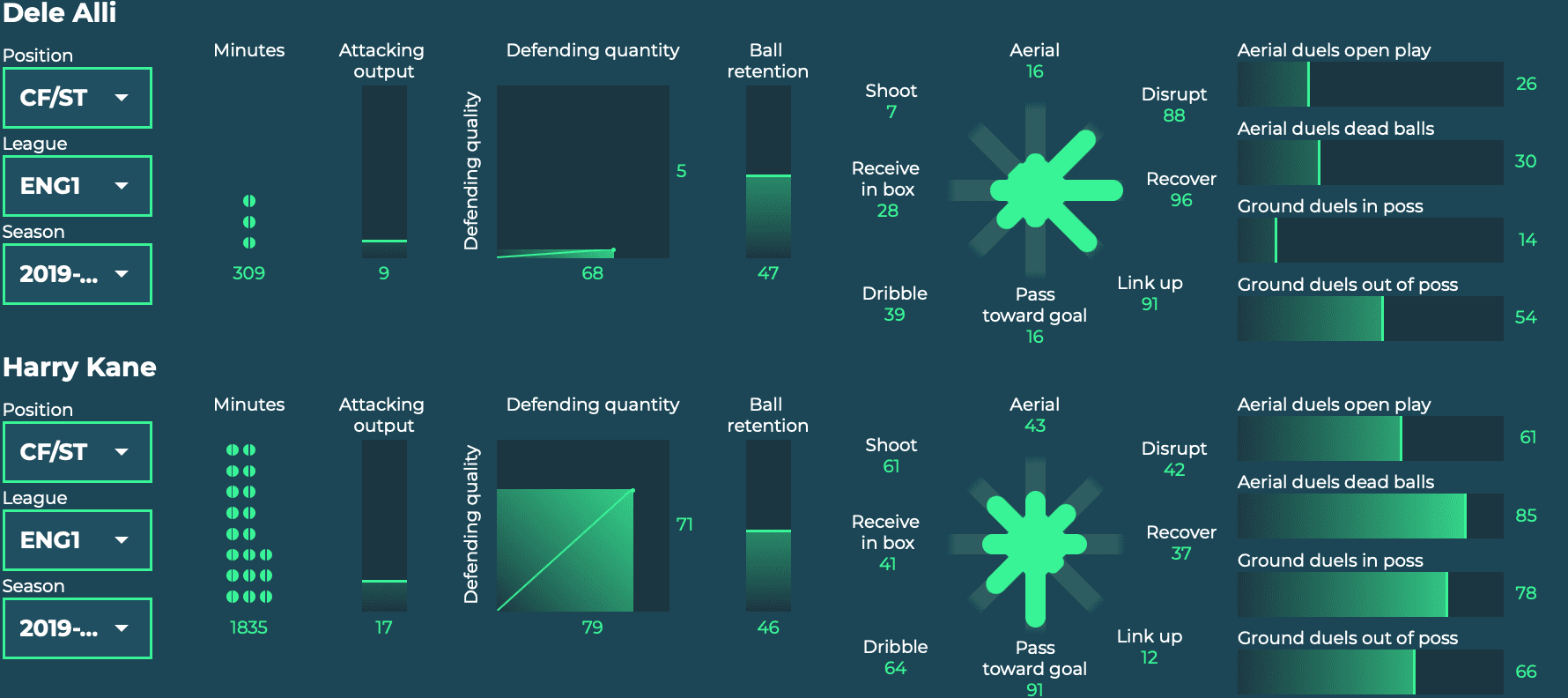
Dele Alli and Kane could not be more different when it comes to playing as a striker. Even as strikers, it is important that they put in the work defensively. Kane’s defending quality and defending quantity both are higher than Dele Alli’s. While their ball retention is similar, Kane is much more willing to pass toward the goal, dribble, receive the ball in the box, and shoot. Dele Alli excels more at disrupting play as a striker and recovering the ball. Furthermore, Kane is much stronger at duels, both aerial and ground duels. Duels for a striker are important because as the last offensive man, the striker is usually the one defenders will engage with the most in attempting to get the ball off them.
Dele Alli is a fantastic player, but his position is not a striker. Neither is Bergwijn, but his abilities match Kane a bit more.
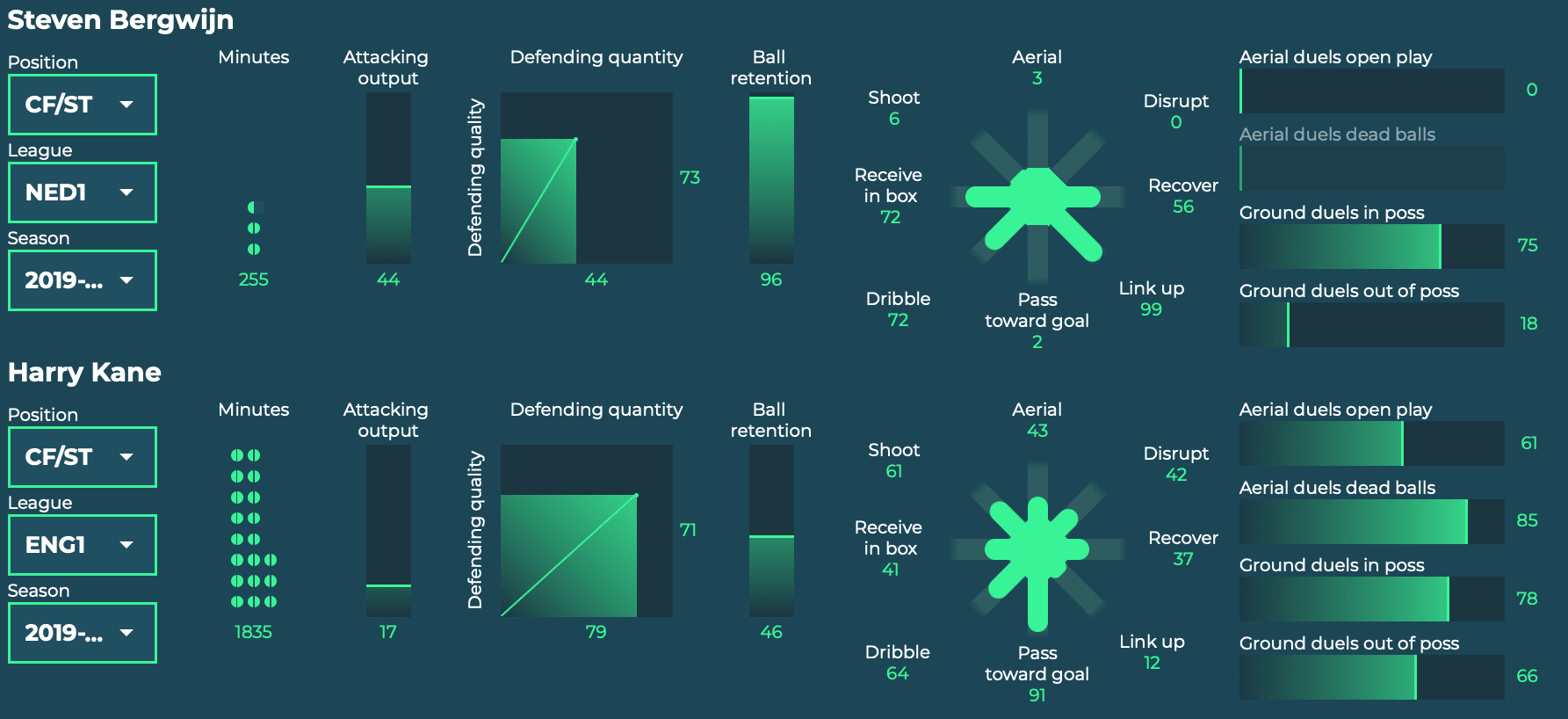
Bergwijn does not defend as much as Kane, but the quality in his defensive actions are similar to the English international. An advantage that Bergwijn has over Kane is his ball retention. He is smaller than Kane so his dribbling ability is higher, as he has an easier time getting around big defenders. His smaller frame also gives him an advantage when attempting to recover the ball, similar to Dele Alli. What Bergwijn has over Dele Alli is his ability to receive the ball in the box (one of the most important aspects of a striker), and perform well in ground duels, these attributes being much more similar to how Kane plays as a #9.
When put in that #9 role, Dele Alli performs similar to a false 9. This role is something that neither he nor Spurs are used to playing, whereas Bergwijn’s abilities lead him to be more of a pure striker like Kane.
Final Thoughts
In the little time he has been at Tottenham, Steven Bergwijn has shown very little, yet very promising attributes to what he can bring to the London club. This scout report showcases that Bergwijn is very talented for a 22-year-old, and he has a lot of attributes that are similar to other wingers in the Premier League. The analysis also shows how Bergwijn can be beneficial in an injury crisis due to his ability to play all across the frontline. If he applies himself well, his growth should definitely help Tottenham Hotspur finally get over the line, and collect some silverware for this generation of players.






Comments